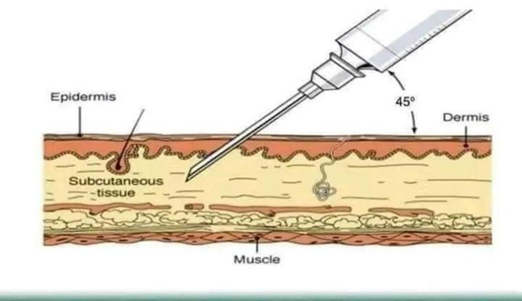Before administering intravenous (IV) amoxicillin, the nurse should do what?
Flush the IV site with normal saline.
Assess the patient for allergies.
Review the patient's intake and output record.
Determine the latest creatinine clearance result.
The Correct Answer is B
B. Before administering any medication, especially antibiotics like amoxicillin, the nurse must assess the patient for allergies or previous adverse reactions to amoxicillin or other beta-lactam antibiotics. Allergic reactions can range from mild rashes to severe anaphylactic reactions, so it's essential to confirm the
patient's allergy status and assess for any signs or symptoms of allergic reaction before proceeding with administration.
A. Flushing the IV site with normal saline is typically not required specifically before administering IV amoxicillin unless it is part of the institution's standard practice to flush all IV lines before and after medication administration.
C. While monitoring intake and output (I&O) is important for assessing fluid balance and kidney function, it is not directly necessary before administering IV amoxicillin unless there are specific concerns related to the patient's fluid status or renal function. However, it is good practice to have a general understanding of the patient's recent fluid intake and output patterns.
D. Creatinine clearance is a measure of kidney function. Checking the latest creatinine clearance result is important for assessing renal function, especially before administering medications excreted by the kidneys. However, amoxicillin is primarily excreted by the kidneys in its unchanged form, so knowing the patient's renal function status can help in determining the appropriate dosage or adjusting the dosing interval if necessary.
Nursing Test Bank
Naxlex Comprehensive Predictor Exams
Related Questions
Correct Answer is A
Explanation
A. Cleansing the injection site is important to reduce the risk of infection.

B. Sterile gloves are not typically required for administering subcutaneous injections unless there is a specific indication, such as when dealing with a client who has a compromised immune system or if there is potential for exposure to bodily fluids.
C. Pinching the skin can help in creating a fold where the needle can be inserted. However, there is no standard recommendation on which hand should be used.
D. Subcutaneous injections are typically administered at a 45-degree or 90-degree angle to the client's skin, depending on the amount of subcutaneous tissue present.
Correct Answer is B
Explanation
B. Sharps containers should be replaced when they are 3/4 full to prevent overfilling, which could increase the risk of needlesticks when trying to dispose of sharps. Ensuring sharps containers are not overfilled helps maintain a safe environment by reducing the risk of accidental puncture injuries during disposal.
A. Used razors should be disposed of in puncture-resistant sharps containers, not in regular wastebaskets. Sharps containers are specifically designed to safely contain sharp objects to prevent accidental injuries.
C. Using two hands to recap a needle is unsafe and increases the risk of accidental needlestick injuries. It's important to educate healthcare workers to avoid recapping needles whenever possible.
D. Breaking needles before disposal is unsafe and increases the risk of injury. Needles should be disposed of intact in a puncture-resistant sharps container.
Whether you are a student looking to ace your exams or a practicing nurse seeking to enhance your expertise , our nursing education contents will empower you with the confidence and competence to make a difference in the lives of patients and become a respected leader in the healthcare field.
Visit Naxlex, invest in your future and unlock endless possibilities with our unparalleled nursing education contents today
Report Wrong Answer on the Current Question
Do you disagree with the answer? If yes, what is your expected answer? Explain.
Kindly be descriptive with the issue you are facing.
